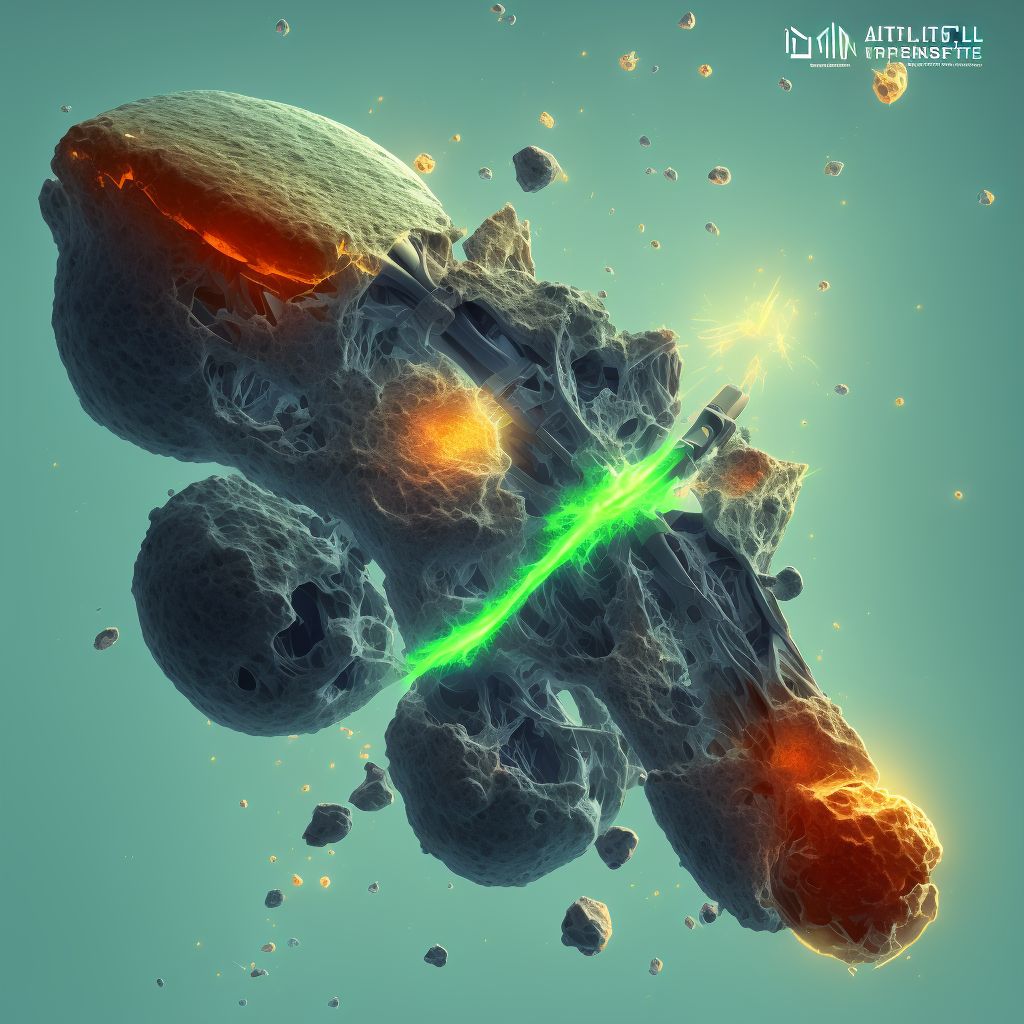
Nondisplaced segmental fracture of shaft of left tibia, subsequent encounter for open fracture type IIIA, IIIB, or IIIC with malunion Save
ICD-10 code: S82.265R
Disease category: S82.265: Nondisplaced segmental fracture of shaft of left tibia
Nondisplaced Segmental Fracture of Shaft of Left Tibia: Understanding the Condition
A nondisplaced segmental fracture of the shaft of the left tibia refers to a specific type of bone break in the lower leg. This fracture occurs when the tibia, or shinbone, breaks into two or more segments, but the fragments remain in their original positions without significant displacement. It is a complex injury that requires medical attention to ensure proper healing and prevent complications.
Often, a subsequent encounter for an open fracture type IIIA, IIIB, or IIIC with malunion occurs. This means that the fracture initially broke the skin, and during the healing process, the bones did not align correctly, resulting in malunion. This condition can lead to functional impairments and may require additional interventions to correct.
When a nondisplaced segmental fracture of the shaft of the left tibia occurs, it is crucial to seek immediate medical care. Your healthcare provider will perform a thorough examination and diagnostic tests, such as X-rays, to evaluate the extent of the injury and determine the appropriate treatment plan.
During the subsequent encounter, the focus will often be on assessing the malunion and considering potential interventions to address it. Treatment options may include surgical procedures such as osteotomy or bone grafting, which aim to realign the bones and promote proper healing. However, it is important to note that this article will not cover treatment methods.
- Causes: Nondisplaced segmental fractures of the shaft of the left tibia commonly result from high-energy trauma, such as motor vehicle accidents or sports injuries.
- Symptoms: Patients with this fracture may experience pain, swelling, bruising, and difficulty bearing weight on the affected leg.
- Diagnosis: Healthcare providers utilize physical exams and imaging tests, such as X-rays or CT scans, to diagnose and evaluate the extent of the fracture.
- Treatment Options: Treatment may involve surgical interventions, such as osteotomy or bone grafting, to correct malunion and promote proper healing.
- Recovery: Rehabilitation and physical therapy play a crucial role in the recovery process, helping patients regain strength, mobility, and function in the affected leg.
In conclusion, a nondisplaced segmental fracture of the shaft of the left tibia with subsequent encounter for open fracture type IIIA, IIIB, or IIIC with malunion is a complex condition that requires medical attention. Proper diagnosis and treatment are essential for optimal recovery and restoring functionality to the affected leg. If you suspect you have this type of fracture, consult a healthcare professional promptly.
Treatment of Nondisplaced segmental fracture of shaft of left tibia, subsequent encounter for open fracture type IIIA, IIIB, or IIIC with malunion:
Treatment Options for Nondisplaced Segmental Fracture of Shaft of Left Tibia
A nondisplaced segmental fracture of the shaft of the left tibia, subsequent encounter for open fracture type IIIA, IIIB, or IIIC with malunion can be a challenging condition to manage. However, several treatment options are available to address this specific injury and promote proper healing.